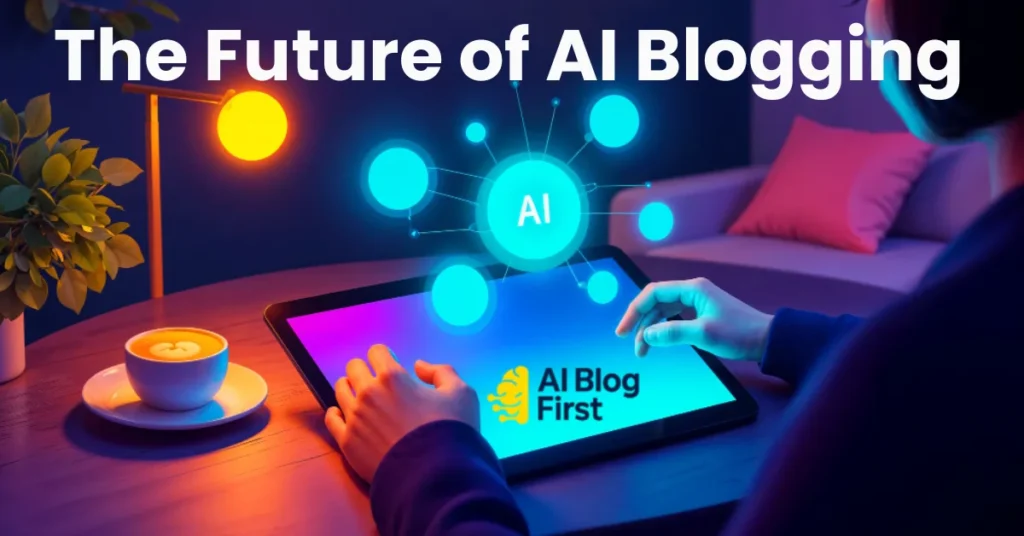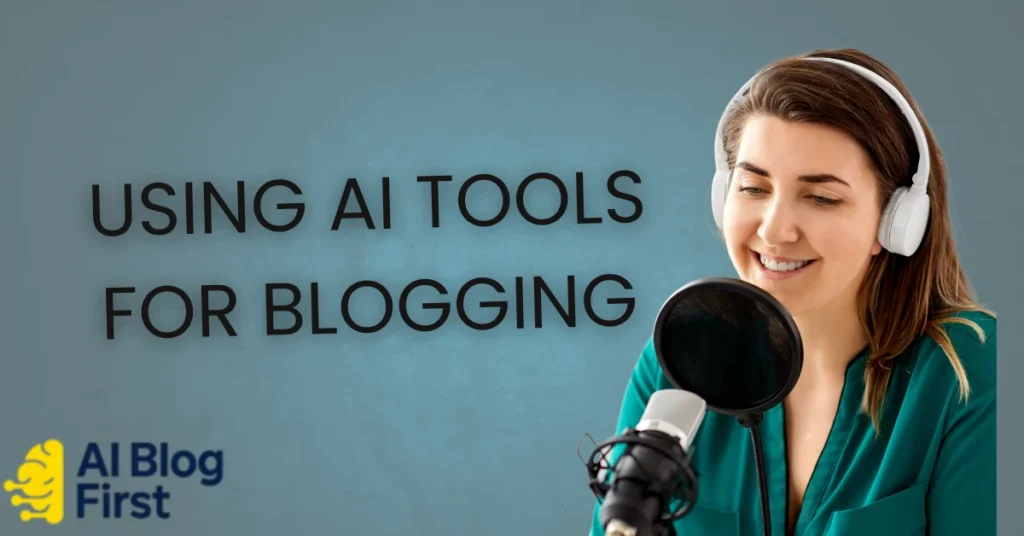
In the fast-evolving field of digital content, artificial intelligence has moved from a theoretical advantage to a practical necessity. For bloggers and content strategists, the conversation is no longer about if we should use AI, but how we can integrate it to produce superior work.
The true future of AI blogging lies in a sophisticated collaboration. It’s a synthesis of human insight—our strategic thinking, creativity, and unique voice—with the analytical power of AI tools. This isn’t about automation for its own sake; it’s about elevating the craft of content creation.
This article will serve as your guide to this new paradigm. We will explore the tangible ways AI is redefining workflows and outcomes, ensuring your content remains not only relevant but also authoritative in the years to come.
The Current State of AI Blog Generators and the Future of AI Blogging

We’ve arrived at a pivotal moment. AI has moved beyond basic text generation to become a sophisticated partner in the content creation process. Today’s AI blog generators can draft entire articles, suggest SEO-friendly titles, and even help with keyword research, significantly speeding up workflows.
However, the output still requires a human touch. While AI can produce content that is grammatically correct and structurally sound, it often lacks the nuance, personal experience, and unique voice that resonate with readers. The current state is one of powerful assistance, not complete replacement.
This is where the opportunity lies. By using AI as a tool to handle the heavy lifting—like initial drafts and data analysis—creators can focus on what they do best: injecting personality, creativity, and authority into their work.
Why 2025 is a Pivotal Year for AI Blogging Tools and Content Strategy
The year 2025 marks a turning point for AI in content creation. The technology is becoming more accessible, and its capabilities are expanding at an exponential rate. We’re seeing AI tools that can not only write but also analyze data to predict content performance and suggest topics that will resonate with a specific audience.
This shift is forcing a re-evaluation of content strategy. The focus is moving from simply producing more content to producing smarter content. This means using AI to gain deeper insights into audience behavior, personalize content at scale, and optimize every post for maximum impact.
As search engines like Google continue to integrate AI into their algorithms, the ability to leverage AI in your own content strategy will become a critical factor for success. It’s no longer a novelty; it’s a fundamental part of modern SEO and content marketing.
Hyper-Personalized Content: A Key Trend for the Future of AI Blogging
One of the most exciting frontiers in the future of AI blogging is hyper-personalization. AI can analyze user data—such as browsing history, past purchases, and on-site behavior—to deliver content that is tailored to individual needs and interests.
This goes beyond simply using a reader’s name in an email. We’re talking about dynamically changing website content, recommending relevant articles, and even tailoring the tone and style of a blog post to match a reader’s preferences. This level of personalization can significantly increase engagement and build a loyal audience.
For bloggers, this means moving away from a one-size-fits-all approach and embracing a more targeted content strategy. By leveraging AI to understand their audience on a deeper level, creators can deliver value that feels personal and relevant.
Visuals and Interaction: Multimodal Content in Future AI Blogging

The future of blogging isn’t just about text. As the provided competitor article highlights, visual and video content are becoming increasingly important. AI is playing a key role in this trend, with tools that can automatically generate images, create video clips from text, and even design interactive elements like quizzes and polls.
This “multimodal” approach to content creation makes blog posts more engaging and accessible to a wider audience. It breaks up long blocks of text, provides visual context, and caters to different learning styles. It also improves key metrics like dwell time and bounce rate, which are important for SEO.
As AI technology continues to advance, the line between different types of content will become increasingly blurred. The most successful bloggers will be those who can effectively integrate text, visuals, and interactive elements into a cohesive and engaging user experience.
Human-AI Workflow Integration: Collaborating for the Future of Blogging
The most effective approach to the future of AI blogging is not a battle of human versus machine, but a partnership. The ideal workflow involves a “human-in-the-loop” approach, where AI handles the repetitive and data-driven tasks, while humans provide the creativity, strategic oversight, and final polish.
This collaborative process might look something like this:
Ideation: Use AI to brainstorm topics and research keywords.
Outlining: Have AI generate a structured outline based on top-ranking competitor articles.
Drafting: Use an AI writer to create the initial draft.
Editing and Enhancement: This is where the human touch is crucial. Edit the AI-generated text for accuracy, tone, and brand voice. Add personal stories, unique insights, and expert opinions.
Optimization: Use AI tools to check for SEO and readability.
This integrated workflow allows creators to produce high-quality content at a faster pace, without sacrificing the authenticity and value that only a human can provide.
Maintaining Your Brand Voice: The Human Touch in the Future of AI Blogging
While AI can mimic writing styles, it cannot replicate a genuine brand voice. Your voice is the unique personality of your blog—it’s what makes you recognizable and builds a connection with your audience. As AI-generated content becomes more common, having a strong and consistent brand voice will be more important than ever.
To maintain your brand voice while using AI, it’s essential to treat the AI’s output as a first draft, not a final product. Always review and edit the content to ensure it aligns with your style, values, and messaging. Inject your own personality, humor, and unique perspective.
Think of AI as a talented but inexperienced assistant. It can do a lot of the groundwork, but it needs your guidance and expertise to create something truly special.
Ethical AI Blogging: Transparency and Trust for the Future

As with any powerful technology, the use of AI in blogging comes with ethical considerations. The most important of these is transparency. It’s crucial to be honest with your audience about your use of AI. This doesn’t mean you need a disclaimer on every post, but it does mean being upfront if asked and not trying to pass off AI-generated content as entirely your own work.
Another key ethical consideration is the quality and accuracy of the information you publish. AI can sometimes generate plausible-sounding but incorrect information. It’s your responsibility as the publisher to fact-check everything and ensure your content is accurate, helpful, and trustworthy.
Building and maintaining trust with your audience is paramount. By using AI responsibly and transparently, you can leverage its power without compromising your integrity.
Analytics and Prediction: Data-Driven Future of AI Blogging
AI is transforming blog analytics from a reactive to a predictive practice. Instead of just looking at past performance, AI tools can now analyze data to forecast which topics will perform well, what headlines will get the most clicks, and what content formats will be most engaging for your audience.
This predictive capability allows for a much more strategic approach to content planning. You can make data-driven decisions about what to write next, ensuring that every piece of content you create has the best possible chance of success.
By embracing these advanced analytics, bloggers can move beyond guesswork and intuition and build a content strategy that is backed by data and optimized for growth.
Frequently Asked Questions (FAQs)
Is there any future in blogging?
Yes, the future of blogging is bright, but it is evolving. Blogging remains a relevant and powerful content marketing tool, especially when integrated with new technologies like AI and multimedia formats.
Is blogging still profitable in 2025?
Blogging can still be highly profitable in 2025, but it requires a strategic approach. Success depends on choosing the right niche, creating high-quality, SEO-optimized content, and effectively monetizing your audience.
Will AI replace blogging?
AI is unlikely to replace bloggers entirely. Instead, it will augment their abilities, acting as a powerful tool for research, drafting, and optimization. The human elements of creativity, personal experience, and critical thinking remain irreplaceable.
What might the future of blogging hold?
The future of blogging will be characterized by hyper-personalization, a greater emphasis on multimodal content (text, video, and interactive elements), and deep integration with AI for data analysis and content creation.
How to Succeed in the Future of AI Blogging
The future of AI blogging is not a threat, but an opportunity. It’s a chance to streamline our workflows, gain deeper insights into our audience, and create more valuable and engaging content than ever before.
Success in this new era will not be about who can produce the most content the fastest. It will be about who can most effectively blend the power of artificial intelligence with the creativity, empathy, and expertise of the human mind.
By embracing a collaborative approach, maintaining our unique voice, and committing to ethical practices, we can not only survive but thrive in the exciting future of AI-powered content creation.


